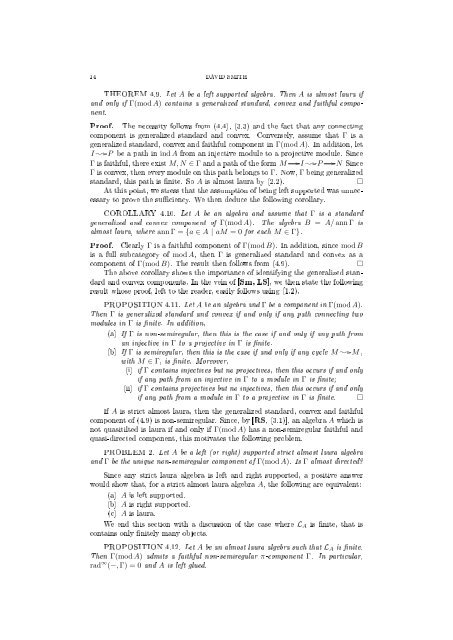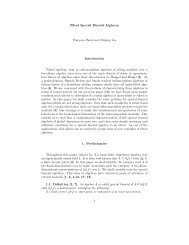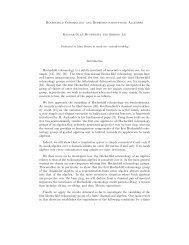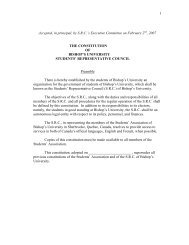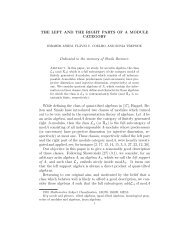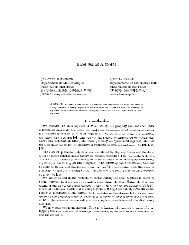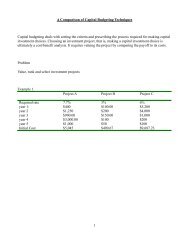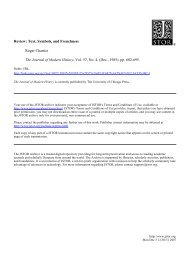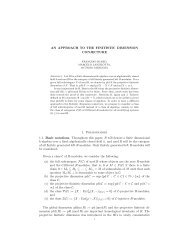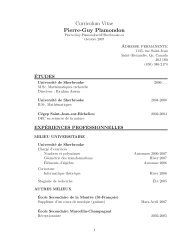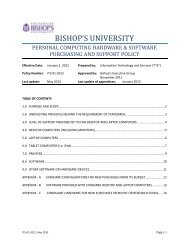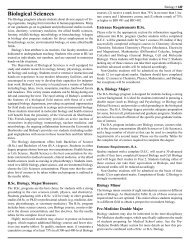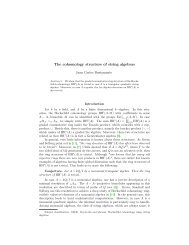Almost laura algebras
Almost laura algebras
Almost laura algebras
Create successful ePaper yourself
Turn your PDF publications into a flip-book with our unique Google optimized e-Paper software.
14 DAVID SMITH<br />
THEOREM 4.9. Let A be a left supported algebra. Then A is almost <strong>laura</strong> if<br />
and only if Γ(mod A) contains a generalized standard, convex and faithful component.<br />
Proof. The necessity follows from (4.4), (3.3) and the fact that any connecting<br />
component is generalized standard and convex. Conversely, assume that Γ is a<br />
generalized standard, convex and faithful component in Γ(mod A). In addition, let<br />
I P be a path in ind A from an injective module to a projective module. Since<br />
Γ is faithful, there exist M, N ∈ Γ and a path of the form M I P N Since<br />
Γ is convex, then every module on this path belongs to Γ. Now, Γ being generalized<br />
standard, this path is nite. So A is almost <strong>laura</strong> by (2.2).<br />
□<br />
At this point, we stress that the assumption of being left supported was unnecessary<br />
to prove the suciency. We then deduce the following corollary.<br />
COROLLARY 4.10. Let A be an algebra and assume that Γ is a standard<br />
generalized and convex component of Γ(mod A). The algebra B = A/ ann Γ is<br />
almost <strong>laura</strong>, where ann Γ = {a ∈ A | aM = 0 for each M ∈ Γ}.<br />
Proof. Clearly Γ is a faithful component of Γ(mod B). In addition, since mod B<br />
is a full subcategory of mod A, then Γ is generalized standard and convex as a<br />
component of Γ(mod B). The result then follows from (4.9).<br />
□<br />
The above corollary shows the importance of identifying the generalized standard<br />
and convex components. In the vein of [Sm, LS], we then state the following<br />
result whose proof, left to the reader, easily follows using (1.2).<br />
PROPOSITION 4.11. Let A be an algebra and Γ be a component in Γ(mod A).<br />
Then Γ is generalized standard and convex if and only if any path connecting two<br />
modules in Γ is nite. In addition,<br />
(a) If Γ is non-semiregular, then this is the case if and only if any path from<br />
an injective in Γ to a projective in Γ is nite.<br />
(b) If Γ is semiregular, then this is the case if and only if any cycle M M ,<br />
with M ∈ Γ, is nite. Moreover,<br />
(i) if Γ contains injectives but no projectives, then this occurs if and only<br />
if any path from an injective in Γ to a module in Γ is nite;<br />
(ii) if Γ contains projectives but no injectives, then this occurs if and only<br />
if any path from a module in Γ to a projective in Γ is nite. □<br />
If A is strict almost <strong>laura</strong>, then the generalized standard, convex and faithful<br />
component of (4.9) is non-semiregular. Since, by [RS, (3.1)], an algebra A which is<br />
not quasitilted is <strong>laura</strong> if and only if Γ(mod A) has a non-semiregular faithful and<br />
quasi-directed component, this motivates the following problem.<br />
PROBLEM 2. Let A be a left (or right) supported strict almost <strong>laura</strong> algebra<br />
and Γ be the unique non-semiregular component of Γ(mod A). Is Γ almost directed?<br />
Since any strict <strong>laura</strong> algebra is left and right supported, a positive answer<br />
would show that, for a strict almost <strong>laura</strong> algebra A, the following are equivalent:<br />
(a) A is left supported.<br />
(b) A is right supported.<br />
(c) A is <strong>laura</strong>.<br />
We end this section with a discussion of the case where L A is nite, that is<br />
contains only nitely many objects.<br />
PROPOSITION 4.12. Let A be an almost <strong>laura</strong> algebra such that L A is nite.<br />
Then Γ(mod A) admits a faithful non-semiregular π-component Γ. In particular,<br />
rad ∞ (−, Γ) = 0 and A is left glued.


